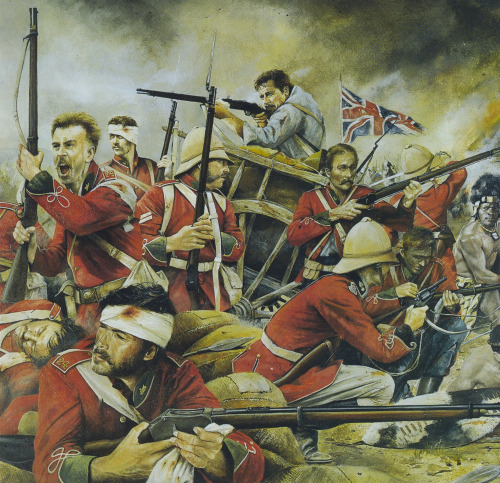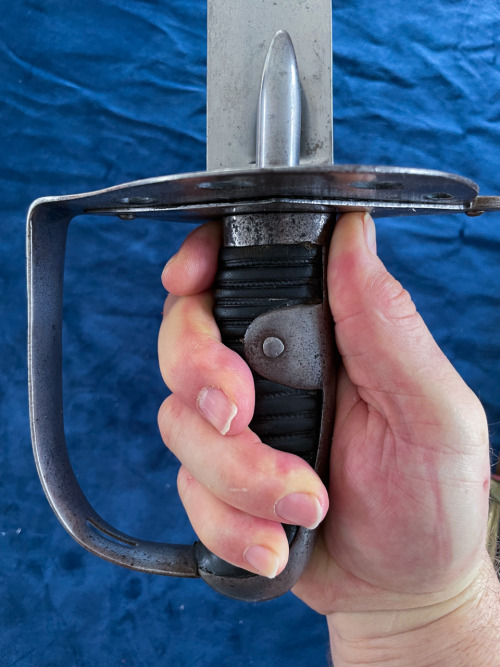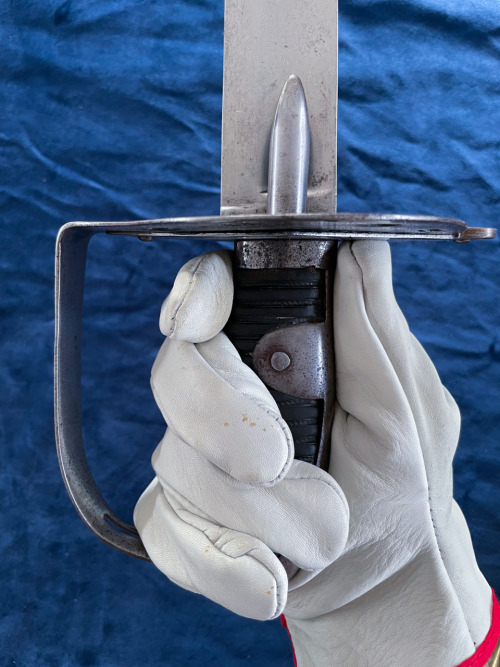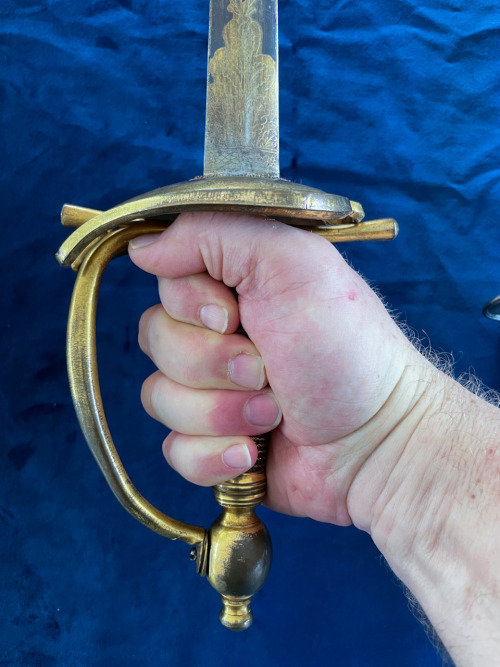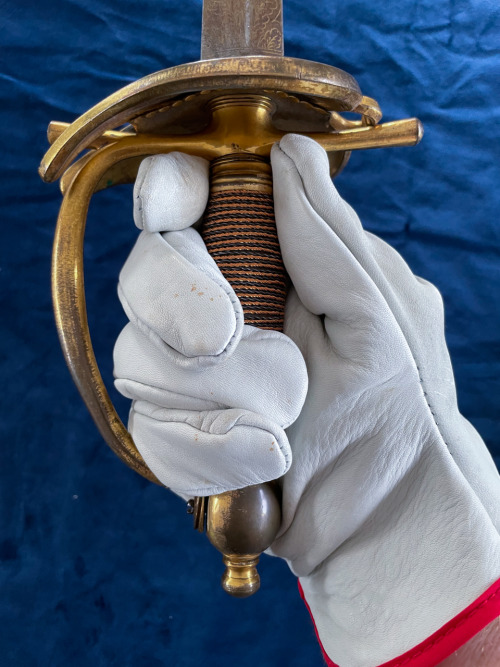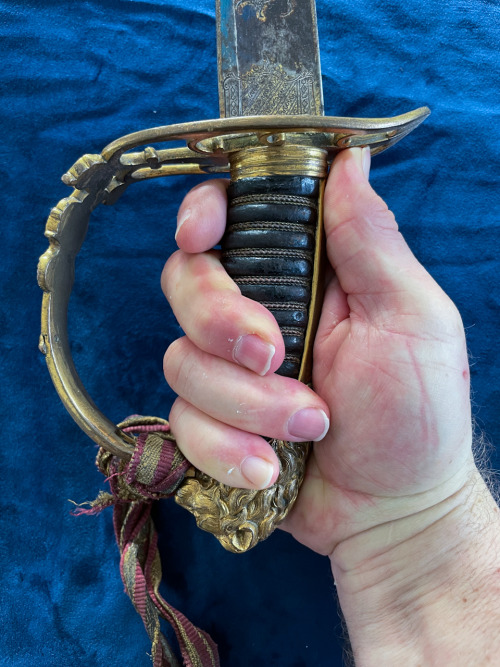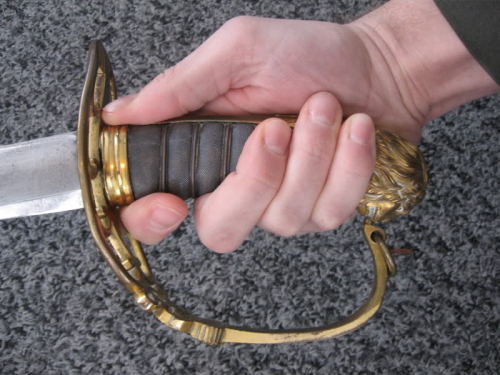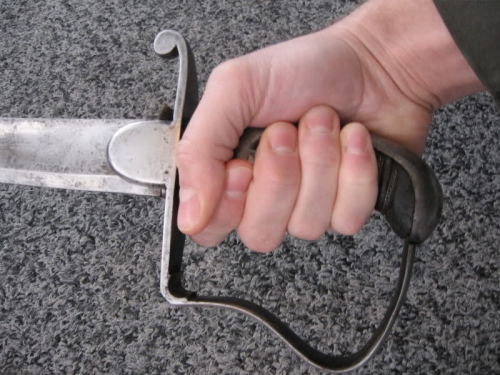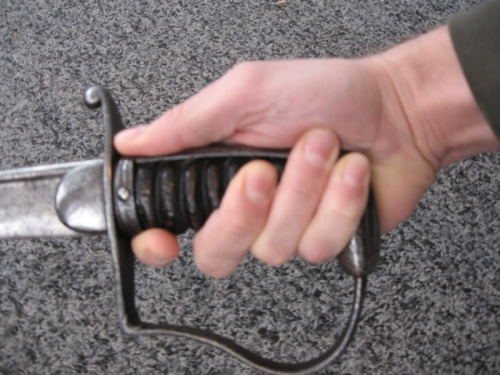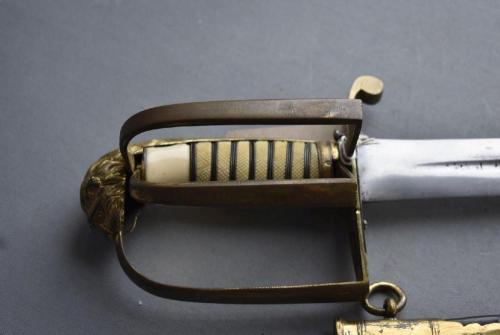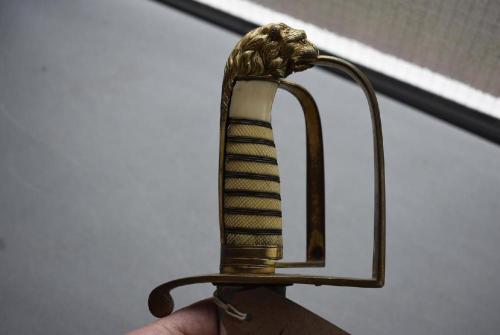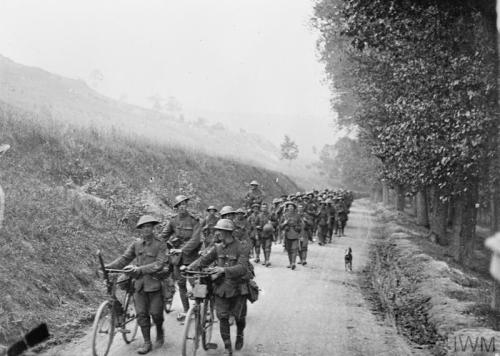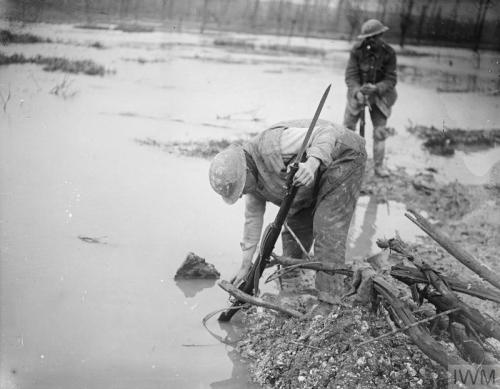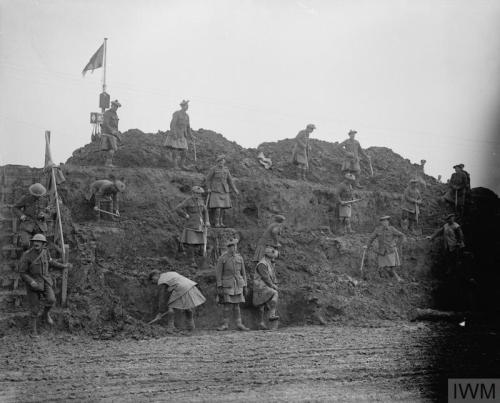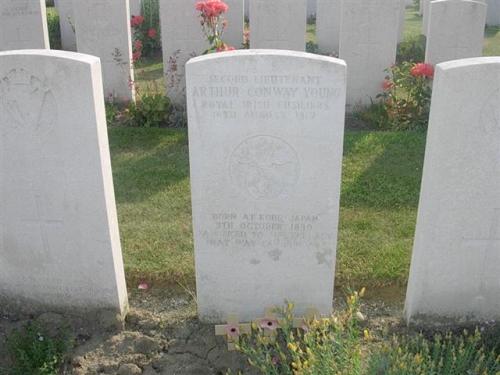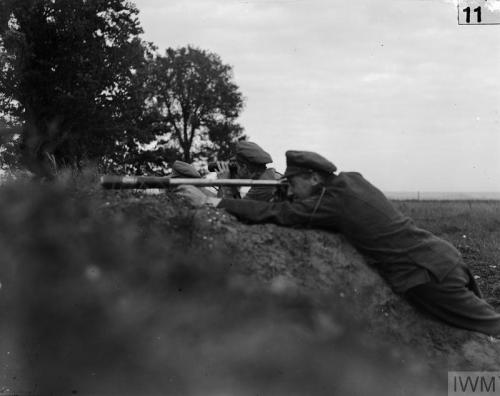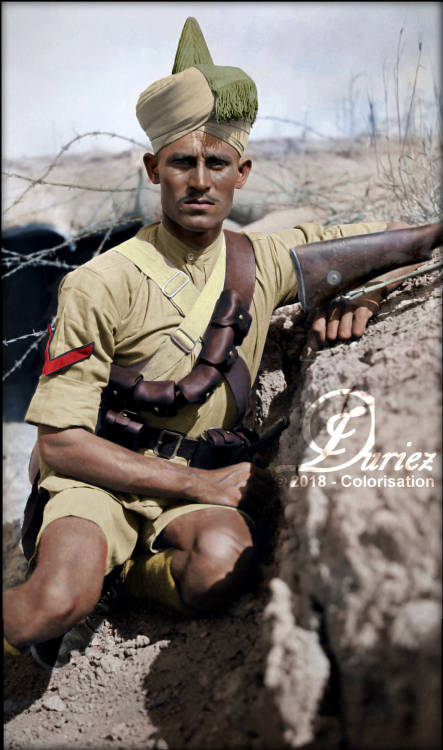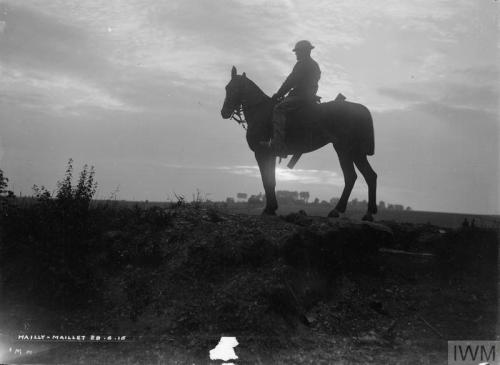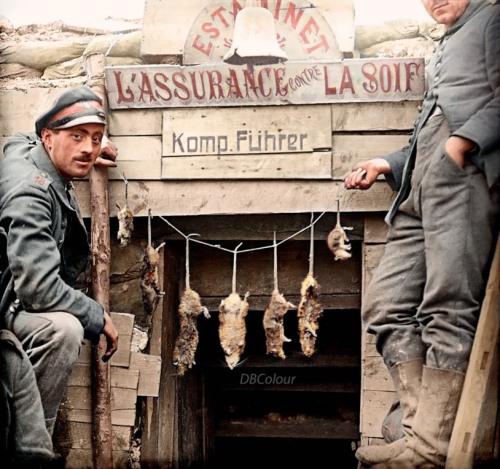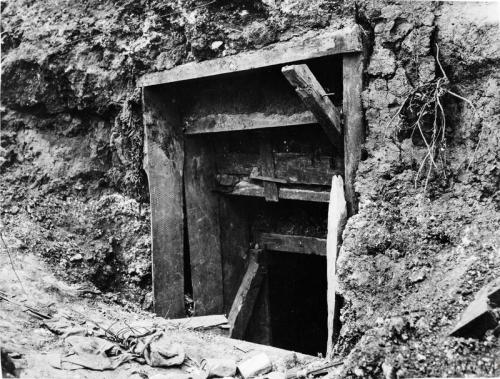#british army
Following on from my posts on sword grips, here is a size comparison between the heavy and light cavalry trooper swords of the French and British Napoleonic armies.
From top to bottom:
French Model An XIII Sabre of the line, - used by Dragoons and Cuirassiers
Originally this blade would have been issued with a hatchet point making it slightly longer. However, by 1814 field modifying them into spear points became common and in 1816 this became an official modification, getting retroactively applied to swords in service.
- Total Length: 1120mm
- Blade Length: 960mm
- Sword Weight: 1300 grams
British 1796 Pattern Heavy Cavalry Sword
Based on the Austrian model 1769 the British sword was originally issued with a hatchet tip. However, like their French opponents, field modification into a spear point became common practice to make the sword more effective in the thrust.
- Total Length: 1020mm
- Blade Length: 890mm
- Sword Weight: 1020 grams
French model An XI, - used by ‘Hunters on horse’, Hussars, Lancers, and Mounted Artillery
Introduced in year eleven (1802) of the Revolutionary calendar the AN XI came about as a rationalisation of the different models of light cavalry sabres in service to meet the supply demands of near constant warfare the new French state found itself in.
- Total Length: 1010mm
- Blade Length: 870mm
- Sword Weight: 1190 grams
British 1796 Pattern Light Cavalry Sabre, - used by Light Dragoons and Mounted Artillery
Designed by John Gaspard le Merchant with cooperation from Henry Osborn in response to complaints of British cavalry troopers on the poor performance of their 1788 pattern sabres. Based loosely on Eastern European sabres the 1796 LC proved to be a hard hitting sword and immensely popular.
- Total Length: 945mm
- Blade Length: 820mm
- Sword Weight: 880 grams

Post link
In the vein of @victoriansword post showing different grips for holding swords above are some photos I took of other British Georgian era swords for comparison.
They are, top to bottom:
1. 1796 Pattern Heavy Cavalry troopers sword
2. 1796 Pattern Heavy Cavalry officers dismounted service sword (with the boat-shell guard).
3. 1803 Pattern Light Company officers sabre.
Out of interest I tried the grips while wearing leather gloves, my rational being that it was likely that these would have been worn most of the times that the swords were used. I don’t have large hands, the gloves are a medium size I purchased from a hardware store. They’re a good fit, but I found that with the 1803 they took up a lot of the space inside the guard.
My personal impression, is that the 1803 favoured the hammer grip as it is mostly a cutting sword. The thumb up the back was good for the 1796 HC officers sword and the 1796 HC trooper when giving point. That said I wouldn’t be surprised if they changed to a hammer grip on the trooper sword once they got into melee.
I will follow this post up with a similar one for three French swords.
Post link
British Officers’ Swords c.1800-20
There was some interest in my tulwar post to see a comparison of grip sizes and to see a hand actually holding the swords for a sense of scale. Here are some photos I took way back in 2010 (apologies for the terrible background and lower image quality). I’m not sure what I was trying to achieve when I took these, but they do demonstrate how one could hold the swords, I suppose. They are, in order from top to bottom:
- British Pattern 1803 Infantry Officer’s Sword
- British Pattern 1796 Light Cavalry Officer’s Sword
- British Pattern 1796-style Officer’s Sword (with pipe-back blade)
Great follow-up to an interesting comparison to different sword grips. It’s always good to see things in context.
Post link
The Osborn ‘Flank’ Officer’s Sabre of the Georgian Period. Henry Osborn (C.1785-1807) is one of the most famous sword cutlers in Georgian Britain. They partnered with Gunby in 1808, becoming Osborn & Gunby (C.1808-1820). These sabres have an average of a 10cm curve. Used by Officer’s of the Light Cavalry and Infantry as a frock/dress/fighting sword. A 10cm curved blade is one of the most curved styles of sabre in British Regiments, being highly irregular, rare and practically unusable in fighting circumstances. These sabres were based off the famous, well-liked and popular 1796 Pattern Light Cavalry Sabre, but sized-down for infantry/dress. Also highly inspired by Shamshirs, following the 1798-1801 Egyptian Campaign, copying the Mameluke-style, being unfullered and highly curved. Most have stirrup-hilts or D-guards
A wonderful graphic compiled by Dynogone showing the variation in a style of sabre that became hugely fashionable with British Officers of the late 18th to early 19th Century. These curved sabres which incorporate features of Middle Eastern and Hussar swords came into popularity in the 1790s and would have persisted until the mid 1820′s when new patterns of swords for infantry and cavalry officers resulted in changes to dress regulations.
Post link
Georgian officers sword with rotating guard or ‘attack hilt’
The rotating guard is an interesting but short lived attempt at solving an issue officers faced when carrying their swords.
As a symbol of authority and a sidearm, most swords spent the majority of their service life in their scabbards at the officer’s side. Even when on active duty, the majority of an army’s time is spent garrisoned or on the move rather than in actual combat. So officers were drawn to swords that were as un-intrusive as possible. But doing so the sacrificed performance, by taking a lighter blade or a less protective hilt.
More commonly seen on French sabres, the rotating guard hoped to solve the issue of hand protection by having the side bars swivel out when in use and rotate forward so when not, so that it had a flatter, less obtrusive profile when sheathed.
In French service this style of hilt only lasted from 1784 to 1798 and presumably for a similar time in British service. In part because this is around the time that nations began introducing their own standard patterns or models and also because the design introduces an inherent weakness in the guard reducing its’ effectiveness.
The idea did however persist into the early 19th Century with the Austrian army who even used it in one of their standard models.
Images are sourced from Antony Cribb Auctions.




Post link
Battle of the Ancre. British soldiers washing the woodwork of their rifles in the Ancre at St. Pierre Divion in November 1916.
Post link
A statue of the Virgin of Montauban, almost the only thing left untouched by shell fire. 1916.
Post link
Second Lieutenant Arthur Conway Young
Son of the late Robert Young, editor of the Japan Chronicle, and of Annie Crockett Young. One of three brothers who served. His uncle chose his inscription, as his father had been deceased. It reads: “Born At Kobe, Japan. 9th October 1890. Sacrificed To The Fallen. That War Can End War.”
Post link
Battle of Albert. Artillery observers watching the bombardment of Pozieres from Observation Post near Aveluy, 10th July 1916.
Post link
A Lance Naik (Lance Corporal) of the Indian 112th Infantry, 34th Brigade (17th Division), kneeling in a trench during the Battle of Sharqat, Mesopotamia 28-30 October 1918. Two days later the Turks surrendered and an armistice was declared.
Post link
Men of the 9th Hodson’s Horse, Indian Army charging directly towards the camera and armed with lances during training near Querrieu. 1916
Post link
German soldiers posing in front of a dugout with rats they caught in their trench and with captured French business signs. “Assurance against Thirst”.
Although shooting at rats was strictly prohibited – being regarded as a pointless waste of ammunition – many soldiers nevertheless took pot shots at nearby rats in this manner. Attacking rats with bayonets was also common.
Post link
Entrance to a German Officer’s dugout showing the protection over its doorway and its depth. 1916
Post link
Battle of Bazentin Ridge. Dressing the wounds of a German prisoner near Bernafay Wood, 19th July 1916.
Post link

